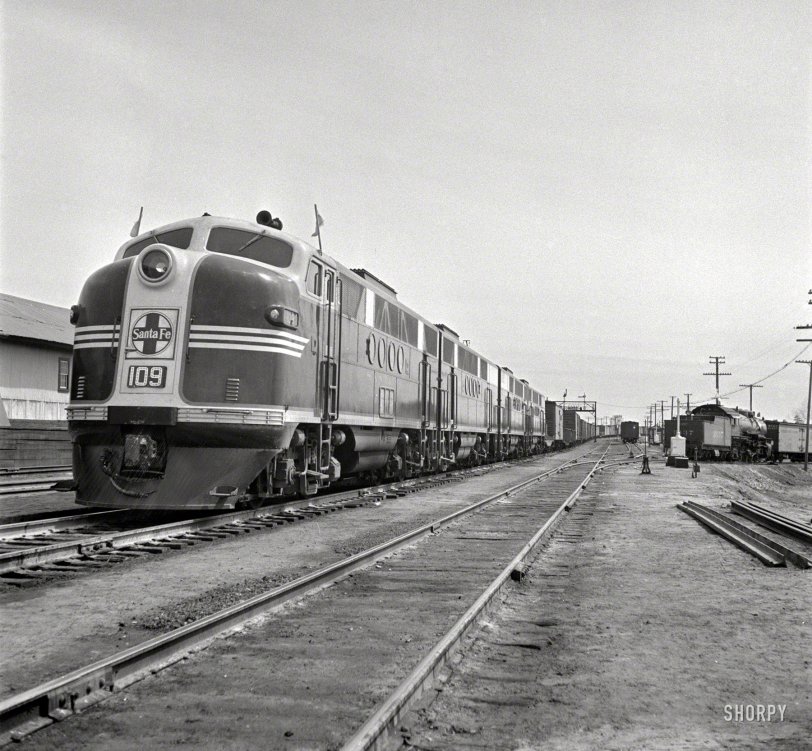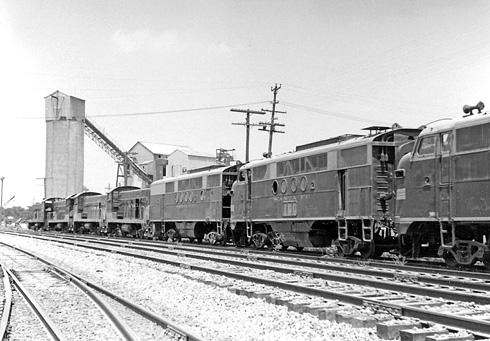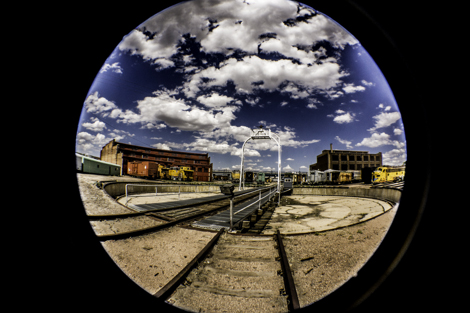


Framed or unframed, desk size to sofa size, printed by us in Arizona and Alabama since 2007. Explore now.
Shorpy is funded by you. Patreon contributors get an ad-free experience.
Learn more.

- Heckuva remote control!
- Sometimes — Things Go Bump!
- I SEE THE LIGHT
- Union Switch and Signal Company
- Get That Light Out Of My Eyes
- Eggs. Eggs. Eggs. The Egg Man is Here!
- Foreboding caption
- Famous Hollywood faces
- Not just S&P
- re: Those things in the jar
- Up In Smoke
- Medical Smoking
- Quick fix
- A Quink Comment
- If You’re Like Me, Never
- Delivering the News
- U.S.A.
- S&P
- 1940 Zenith radio model 6G601
- Quality goes in before the name goes on!
- Snazzy skirt
- Carbon Arc Lamps
- Illuminate us
- I remember it well
- I can't prove it
- Complicated then, forgotten now
- Bryan-Stevenson
- Skinny is as skinny does
- How do you rest in peace
- Riding the footboards
Print Emporium
Diesel Freight: 1943

March 1943. "Flagstaff, Arizona. Diesel locomotive entering town along the Atchison, Topeka & Santa Fe Railroad between Winslow and Seligman." Photo by Jack Delano for the Office of War Information. View full size.
Lectrogeek68 is basically correct
in that General Electric was EMD's only true competitor until their roles reversed in the 1990s, and GE displaced EMD as the dominant locomotive manufacturer in North America. In 2010 Caterpillar purchased what was left of EMD from a consortium of private equity firms who purchased the division from GM in 2005, and is seeking to reverse that.
I honed many a cylinder liner and rough cut more piston castings than I care to remember at EMD's McCook plant during the summers of my undergraduate college years.
At the end of their careers
Here is a photograph of some sister locomotives stripped of various parts including their road trucks awaiting scrap.

Nice style
The front of this is how all the passenger diesels looked when I was a kid and I think it's still by far the most attractive design. I don't know why they departed from it.
Sigh
There are a bunch of those old girls rotting away in the Union Pacific
yard In Cheyenne, WO.

Color scheme
You are correct, the blue and yellow was for freight and the silver and red was passenger. That isn't to say it was a hard fast rule, but there was different gearing on passenger locomotives for a higher speed.
Re: Color Scheme
I always figured the blue and yellow color scheme was for freight trains and the red and yellow was for passenger trains. Does anybody know?
Rationing exemptions
EMD was the only manufacturer permitted to build diesel-electric locomotives during the war, even though diesels were what most railroads wanted. Having never built a steam locomotive, they were exempt from the War Production Board's requirement to use only old and well-proven technology. This special exemption gave EMD a huge advantage over Alco and Baldwin after the war. In the end, General Electric was and is the only company able to compete.
Much of their output was allocated to the ATSF, due to the water supply problems already mentioned.
[Electro-Motive was a division of General Motors, not General Electric. - Dave]
I meant that General Electric was and is the only locomotive manufacturer able to compete with Electro-Motive, until recently a division of General Motors.
Color Scheme
Considering the Santa Fe emblem and the engine number, I suspect Vonderbees has the correct paint colors for this locomotive. As a child growing up in Amarillo in the 50s-mid 60s I recall most of the Santa Fe engines I saw had the red and yellow paint scheme as shown in this previous Shorpy post rather than the blue and yellow scheme. Currently living less than two blocks from a BNSF line, I see lots of the red/yellow scheme though the red is more orange red than I remember as a child.
Perfect Solution
Diesels don't need water, which is why early diesel power flourished on ATSF, particularly in the southwest. Locomotives like 2-8-2 3137 in background wouldn't last much longer in the arid divisions across Arizona, but she did have ten more years in her on the eastern divisions, not going to scrap until 1953.
Very Similar To 103
Very similar locomotive to this Shorpy post from years past.
























On Shorpy:
Today’s Top 5